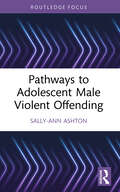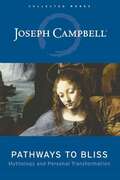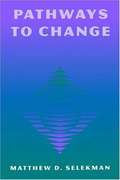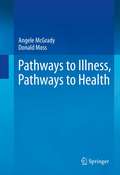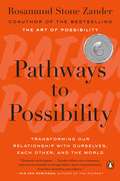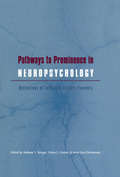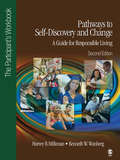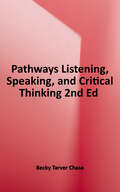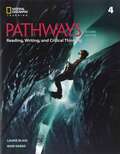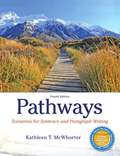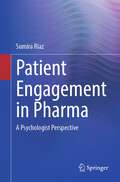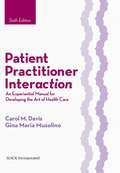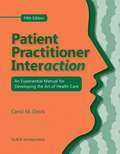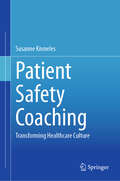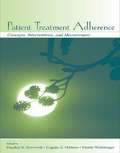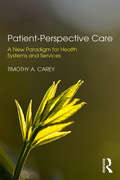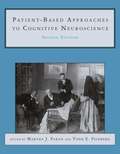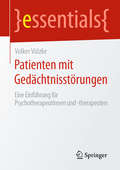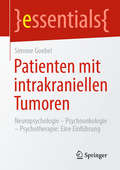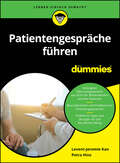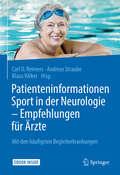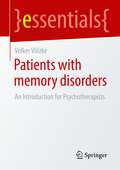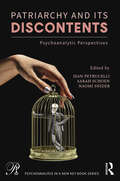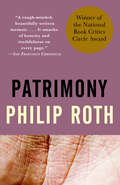- Table View
- List View
Pathways to Adolescent Male Violent Offending (Routledge Studies in Criminal Behaviour)
by Sally - AshtonThis book differentiates between categories of adolescent male offending and explores the behavioural and social profiles of those who become involved inviolent offending and organized crime. Using self-reported and arrest data, the book examines the key stages of male adolescent offending with a view to early recognition of behaviours that leave young men vulnerable to criminal exploitation and the escalation of violence. It also explains the importance of understanding crime motivations, how young men view themselves when they offend, and the emotions that they experience. Rather than looking at violent offending as a single category of behavior, the book helps readers differentiate between types of adolescent violence and understand the underlying psychological and social causes. It offers an insight into the journey of young people who are criminally exploited and those who become involved in committing acts of serious violence and organized crime. It does so by using data from official records, self-reported offending, and the narratives of young people. Each chapter focuses on a particular stage of offending with a view to early identification, support, and diversion. Pathways to Adolescent Male Violent Offending is aimed at practitioners in youth offending services, youth work, policing, and education. It will also be useful for students of forensic and investigative psychology, criminal justice, policing, and child and adolescent mental health.
Pathways to Bliss: Mythology and Personal Transformation (The Collected Works of Joseph Campbell.)
by Joseph CampbellJoseph Campbell famously defined myth as “other people's religion.” But he also said that one of the basic functions of myth is to help each individual through the journey of life, providing a sort of travel guide or map to reach fulfillment — or, as he called it, bliss. For Campbell, many of the world's most powerful myths support the individual's heroic path toward bliss. <p><p> In Pathways to Bliss, Campbell examines this personal, psychological side of myth. Like his classic best-selling books Myths to Live By and The Power of Myth, Pathways to Bliss draws from Campbell's popular lectures and dialogues, which highlight his remarkable storytelling and ability to apply the larger themes of world mythology to personal growth and the quest for transformation. Here he anchors mythology's symbolic wisdom to the individual, applying the most poetic mythical metaphors to the challenges of our daily lives. <p><p> Campbell dwells on life's important questions. Combining cross-cultural stories with the teachings of modern psychology, he examines the ways in which our myths shape and enrich our lives and shows how myth can help each of us truly identify and follow our bliss.
Pathways to Change: Brief Therapy Solutions with Difficult Adolescents
by Matthew D. SelekmanFew therapists dispute the difficulties in treating "troublesome" or "reluctant" adolescents. Filling a gap in the literature, this volume specifically addresses the clinician's needs for working with this difficult population. Matthew D. Selekman presents a Solution-Oriented Brief Family Therapy approach, a highly pragmatic and innovative therapy model for working with these challenging cases. Encouraging therapeutic improvisation and incorporating the use of humor, Selekman demonstrates how the clinician can capitalize on the strengths and resources of family members, peers, and other involved mental health professionals to resolve the client's presenting problems rapidly. His approach artfully integrates cutting edge therapeutic ideas from Steve de Shazer, Michael White, Tom Andersen, and the Galveston group. Dispelling the notion that the Solution-Oriented Brief Therapy model is merely a "band-aid" approach, the author demonstrates powerful methods for facilitating systemic, lasting change. PATHWAYS TO CHANGE includes many helpful features that enable mental health and addiction professionals to conduct effective brief therapy successfully with difficult adolescents and their families. Selekman provides detailed guidelines for therapeutic task design and selection, purposeful systemic interviewing, and empirically based strategies for engaging difficult adolescents, and ways to collaborate with involved helping professionals from larger systems. He also presents a blueprint for how to conduct his Solution-Oriented Parenting group, which can be utilized as an alternative to regular family therapy or when therapists are unable to engage the adolescents in treatment. Incorporating case examples and actual interview transcripts to highlight key therapeutic techniques, Selekman presents a comprehensive, ecosystemic therapeutic approach that provides useful therapeutic options for working with a challenging population. PATHWAYS TO CHANGE is an important resource for psychologists, psychotherapists, social workers, addiction professionals, family therapists, and anyone working with difficult adolescents and their families.
Pathways to Illness, Pathways to Health
by Angele Mcgrady Donald MossThis book, designed for professionals, introduces a psychobiological model for understanding the paths that lead people to illness and provides recommendations for alterations of maladaptive pathways so that health is regained. Research findings are incorporated to identify causal variables for illness that can be targets for change. Evidence based recommendations for healthy behaviors and therapies are described. Throughout the book, the authors emphasize recognition of turning points on the path to illness that, through informed decision making and implementation of behavioral change, can be re-directed to pathways to health. This book presents case material to illustrate the directions that lead people to illness or to health. The pathways metaphor provides an organizing force, both in addressing variables contributing to illness onset, and in identifying interventions to restore health. This approach will guide the clinician to understanding how people become ill and the types of interventions that are appropriate for stress related illnesses. The clinician will also become better informed about ways to help clients make better decisions, mobilize clients' survival skills, and implement an interactive model of care. The book includes chapters on stress-related illnesses with high prevalence in today's society. For each illness, the genetic-psychobiological etiology is explored with enough detail so that the clinician understands the best method of patient assessment and treatment. One of the strengths of the book is the step-wise system of interventions that are applied to the stress-related illnesses. Beginning with re-establishment of normal daily psychobiological rhythms and continuing to evidence based state of the art interventions, the professional is presented with detailed intervention plans. For example, the section on "Applications to common illnesses: metabolic disorders of behavior: diabetes, hypertension, and hyperlipidemia" considers the confluence of genetics, behavior, and maladaptive mind body interactions to produce the metabolic syndrome. Then the personal and professional assessments are described to establish the baseline for recommending treatment while fully engaging the patient. Finally, multilevel interventions are formulated for these disorders. The plan begins with clinician guided self care recommendations to re-establish the normal rhythm of appetite and satiety. The next level of interventions consists of skill building techniques, such as relaxation and imagery. Lastly, psychotherapy and advanced applied psychophysiological interventions are detailed. Case examples are used throughout to illustrate the pathways to illness, the turning points, and the pathways to health. From the patients' viewpoints, the pathways metaphor is a motivator. The patient is guided to understand the paths that led to illness. Subsequently, the patient becomes empowered by the pathways framework to begin to make choices that lead to health.
Pathways to Language: From Fetus to Adolescent (The Developing Child #38)
by Annette Karmiloff-Smith Kyra KarmiloffOur journey to language begins before birth, as babies in the womb hear clearly enough to distinguish their mother's voice. Canvassing a broad span of experimental and theoretical approaches, this book introduces new ways of looking at language development. A remarkable mother-daughter collaboration, Pathways to Language balances the respected views of a well-known scholar with the fresh perspective of a younger colleague prepared to challenge current popular positions in these debates. The result is an unusually subtle, even-handed, and comprehensive overview of the theory and practice of language acquisition, from fetal speech processing to the development of child grammar to the sophisticated linguistic accomplishments of adolescence, such as engaging in conversation and telling a story. With examples from the real world as well as from the psychology laboratory, Kyra Karmiloff and Annette Karmiloff-Smith look in detail at the way language users appropriate words and grammar. They present in-depth evaluations of different theories of language acquisition. They show how adolescent usage has changed the meaning of certain phrases, and how modern living has led to alterations in the lexicon. They also consider the phenomenon of atypical language development, as well as theoretical issues of nativism and empiricism and the specificity of human language. Their nuanced and open-minded approach allows readers to survey the complexity and breadth of the fascinating pathways to language acquisition.
Pathways to Possibility: Transforming Our Relationship with Ourselves, Each Other, and the World
by Rosamund Stone Zander"Rosamund Zander is a miracle. Her generous voice will resonate with you, change you and help you create work that matters." --Seth Godin, author of The Icarus Deception"Fresh, compelling, and uplifting." --Booklist The bestselling author of The Art of Possibility returns with a new vision for achieving true human fulfillmentIn this powerful and inspiring book, family systems therapist and executive coach Rosamund Stone Zander invites readers to shed the childhood stories that hold us back, and enter a realm of true maturity and fulfillment, where limitless growth becomes possible. As children, we develop stories about how the world works, most of which get improved upon and amended over time. But some do not, even as we mature in other ways. Opinionated, self-centered and fear-driven, these "child stories" are the source of the behavioral and emotional patterns that hold us back. When we learn to identify and rewrite these stories, we can do remarkable, even magical things. Zander shows us that life is a story we tell ourselves, and that we have the power to change that story. She illuminates how breaking old patterns and telling a new story can transform not just our own lives, but also our relationships with others--whether in a marriage, a classroom, or a business. Finally, she demonstrates how, with this new understanding of ourselves and our place within an interconnected world, we can take powerful action in the collective interest, and gain a sense of deep connection to the universe. This galvanizing book expands our notions of how much we can grow and change, whether we can affect others or the world at large, and how much freedom and joy we can experience. Stimulating and profound, it is the perfect companion to her beloved first book, The Art of Possibility.From the Hardcover edition.
Pathways to Prominence in Neuropsychology: Reflections of Twentieth-Century Pioneers
by Anthony Y. Stringer Eileen L. Cooley Anne-Lise ChristensenCaptures the stories behind the work of the clinicians and scholars who have contributed significantly to neuropsychology's development.
Pathways to Self-Discovery and Change: A Guide for Responsible Living: The Participant's Workbook (2nd Edition)
by Dr Kenneth W. Wanberg Harvey B. MilkmanPathways to Self-Discovery and Change: A Guide for Responsible Living - The Participant’s Workbook, Second Edition provides a written and richly illustrated format through which clients can better understand and reflect on each of 32 (approximately 90 to 120 minutes in length) youth-focused CBT treatment sessions. Pathways to Self-Discovery and Change supplies clients with a visual and written record of all treatment objectives, content information, modeling and role-plays, discussion points, interactive exercises, and reflective assignments and a place to record their ideas, insights, short- and long-term goals, and progress during the entire treatment episode. The Participant’s Workbook is geared to a broad range of reading and conceptual abilities. Using comic strip illustrations and gripping stories (presented through the narrative voice of teenagers who experience a variety of problems with substance abuse, criminal conduct, and mental health issues), clients are engaged in active discussion about the situations, thoughts, emotions, and behaviors that have become embroidered in their patterns of substance abuse and criminal conduct.
Pathways: Listening, Speaking, and Critical Thinking 1
by Becky Tarver ChasePathways, Second Edition, is a global, five-level academic English program. Carefully-guided lessons develop the language skills, critical thinking, and learning strategies required for academic success. Using authentic and relevant content from National Geographic, including video, charts, and other infographics, Pathways prepares students to work effectively and confidently in an academic environment.
Pathways: Reading, Writing, and Critical Thinking 4
by Mari Vargo Laurie BlassPathways, Second Edition, is a global, five-level academic English program. Carefully-guided lessons develop the language skills, critical thinking, and learning strategies required for academic success. Using authentic and relevant content from National Geographic, including video, charts, and other infographics, Pathways prepares students to work effectively and confidently in an academic environment.
Pathways: Scenarios For Sentence And Paragraph Writing
by Kathleen T. McWhorterA lively, integrated approach that emphasizes the connection of the reading and writing processes Pathways: Scenarios for Paragraph and Sentence Writing, Fourth Edition teaches fundamental sentence and paragraph writing skills by engaging student interest, maintaining a focus on expressing ideas rather than on following rules. Students learn grammar in the context of the “whole paper.” Seven of the 17 chapters deal with grammar topics; in these chapters, students examine student essays, read and respond to ideas, and write and revise paragraphs. In Parts II through IV, students apply what they have learned about sentence-level correctness to their own writing as they explore logical paragraph development and organization of ideas. The last two chapters introduce essay writing, enabling students to accelerate from paragraphs to essays, with the goal of achieving stronger, more fully developed writing skills.
Patient Engagement in Pharma: A Psychologist Perspective
by Sumira RiazTerms such as “patient engagement”, “centricity”, and “patient first” are often loosely used to describe a company vision, a joint objective in establishing an ethos which incorporates the person who matters the most, the patient. Traditionally, a psychologist is known to work in clinical settings, directly with people experiencing psychological difficulties, within a healthcare structure. This is still the premise; however, the foundational knowledge and understanding of human behaviour has driven psychologists into a new, previously unconsidered professional field: the healthcare and pharmaceutical industry. This industry is pivotal in clinical drug development, new discoveries, innovation, and the reach is endless. So, what is a psychologist doing working in this environment? This book offers insights on how to build successful patient engagement strategies based on behaviour science and the real-world experience of a psychologist working in the pharmaceutical industry.
Patient Practitioner Interaction: An Experiential Manual For Developing The Art Of Health Care
by Carol M. Davis Gina Maria MusolinoFor over 20 years, Patient Practitioner Interaction: An Experiential Manual for Developing the Art of Health Care has been the cornerstone textbook for health care professionals to learn and develop effective interpersonal professional behavior. Building on the foundational knowledge of past editions, the updated Sixth Edition continues to teach health care professionals how to develop self-awareness and communication skills critical to providing ethical, compassionate, and professional treatment and care for and with their patients. Drs. Carol M. Davis and Gina Maria Musolino designed the textbook to assist both faculty and students through instructional and learning objectives emphasizing the importance of self-awareness in patient interaction. The Sixth Edition guides faculty in teaching the essential component required of all health care professionals: the ability to know oneself and one's patterns of response in highly contentious situations. Through the featured learning activities and chapters on self-awareness and self-assessment, students will be able to better understand, change, and evaluate their learned patterns, values, and readiness for mature patient interactions for both typical and challenging patient care situations. The learned skills of self-awareness and effective interpersonal communication allow clinicians, faculty, and students to provide compassionate and therapeutic treatment and care for the good of the patients and their families. Developing health care providers are also guided in new focus areas in health care leadership and advocacy through interactive exercises. Features and benefits of the Sixth Edition: Four chapters on self-awareness to guide students in evaluating their values and readiness for mature interaction with patients under stressful situations, as well as their ability and capability for self-assessment and peer-assessment Interactive and online learning activities of real-life clinical situations and vignettes with tools provided to use in the classroom to make learning active and engaging. New content areas addressing leadership and advocacy with professional and community organizations; and self and peer assessment for fostering reflective professional development. An accompanying Instructor's Manual to help faculty learn how to convey the material in effective ways Instructors in educational settings can visit www. efacultylounge. com for additional material to be used for teaching in the classroom. Patient Practitioner Interaction: An Experiential Manual for Developing the Art of Health Care, Sixth Edition will continue to be the go-to resource for students, faculty, and clinicians in allied health professions for effective patient interaction.
Patient Practitioner Interaction: An Experiential Manual for Developing the Art of Health Care
by Carol M. DavisOver 20 years ago, Dr. Carol M. Davis created the path for teaching health care professionals how to develop self-awareness and communication skills critical to providing ethical, compassionate, and professional treatment and care to their patients. That path is Patient Practitioner Interaction: An Experiential Manual for Developing the Art of Health Care, now in its Fifth Edition. While the ways of communication have evolved over the last 23 years, the face-to-face role of the practitioner and patient has not. With technology having a large presence in health care, the personal interaction and comfort provided by the health care professional serves an even more important purpose in facilitating healing with therapeutic presence. Patient Practitioner Interaction, Fifth Edition begins with chapters that assist students in self-awareness and understanding of their own history in developing their values and communication skills. This then guides the student into learning how to differentiate personal values from professional values. In the remaining chapters, Dr. Carol M. Davis and her contributors take Patient Practitioner Interaction, Fifth Edition into the heart of the text: teaching actual skill development in communicating with patients, as well as skills in diagnosis, prognosis, and treatment. The updated exercises at the end of each chapter encourage an essential element in the inculcation of these fundamental skills -- reflection and personalization of the material to ones own story. New in the Fifth Edition: * A new chapter on communicating about spirituality that teaches health care professionals to better assess the needs of patients and families dealing with hope, faith, and despair * New material on communicating in the information age * A reorganization of the chapters, contemporary terminology, and references * New and updated exercises at the end of each chapter in the book.
Patient Safety Coaching: Transforming Healthcare Culture
by Susanne KnowlesThis book argues that patient safety is the cornerstone of high-quality healthcare, and that we need to highlight the positive impact of a Safety-11 approach to risk management to improve the quality of patient services and care. Moreover, the author emphasizes the importance of upskilling leaders with coaching capability within the healthcare facility so that decisions can be made quickly to prevent adverse events. In light of this, this book aims to equip clinical leaders across all levels and in all areas of healthcare organizations with the knowledge and skills to develop a patient safety culture in their team and organization based on evidence-based contemporary research into patient safety practices. The author also proposes strengthening leader capability by outlining how they can create a psychologically safe working environment and adopt a coaching leadership style that promotes staff wellbeing and patient care. This book provides strategies for leaders so they can ensure staff wellbeing at work and a patient-centric approach to patient care. It outlines how clinical leaders can support team members to reduce their stress, better utilize their strengths, practice mindfulness, remain positive, and build resilience in the face of adversity, whilst also fostering a workplace culture of trust, support, and compassion. Lastly, this book aims to provide high-level executives and experienced clinical leaders with contemporary knowledge of governance issues and the best practice methods concerning patient safety as a quality improvement strategy.
Patient Treatment Adherence: Concepts, Interventions, and Measurement
by Hayden B. Bosworth Eugene Z. Oddone Morris WeinbergerThis new book summarizes the adherence literature for a number of specific health behaviors and populations. It provides a comprehensive source on the conceptualization, interventions, and measurement of treatment adherence and a synthesis of the research across demographic and chronic diseases. The text presents problems associated with treatment adherence; theoretical models that have commonly been used to understand, predict, and/or improve adherence; adherence with specific behaviors including exercise, diet, rehabilitation, medication, and psychological therapies; and strategies in enhancing adherence.Because chronic diseases involve similar behaviors, the handbook is organized by specific behaviors and special populations, and not by disease. Every chapter is sub-organized by specific diseases to ensure easy access for the readers and features a discussion of adherence across demographic and chronic conditions, a review of previous interventions directed at the particular behavior or population, questions and scoring algorithms for widely used measures of treatment adherence, a discussion of the clinical research, and where appropriate, policy implications. Patient Treatment Adherence addresses: practical recommendations to improve adherence; the impact of non-adherence including costs and health-related quality of life; methodological issues such as assessing cost-effectiveness; and the use of technological advances to improve adherence.Intended for health service professionals, health, clinical, social, and cognitive psychologists, primary care physicians, pharmacists, and policy-makers, this text is also an excellent resource for graduate courses on health psychology and public health.
Patient-Perspective Care: A New Paradigm for Health Systems and Services
by Timothy A. CareyInappropriate health care is an escalating and expensive problem. It affects high income, middle income, and low income countries and wastes billions of dollars annually as well as harming individuals and communities. Inappropriate care refers to both the overuse and underuse of tests and treatments and, ironically, can occur concurrently within the same health system. Even though patient-centred care is still the prevailing ethos, specifying where patients should be situated geographically has not required health professionals to consider the preferences, values, and priorities of patients when making treatment decisions. Patient-perspective care demands that the decisions health professionals make are in the service of patient’s goals. Health care, ultimately, is helping individuals to live the lives they would wish for themselves. In order to meet this imperative, health professionals must work towards understanding what their patients would like to achieve through their engagement with health services. This book details the extent and scope of inappropriate care and how we have arrived in this position. The necessity for patient-perspective care is outlined and provides a theoretical framework that explains why patient-perspective care is so critical. The implications of this theory are then explored and specific strategies for moving towards a patient-perspective approach are discussed. This book is entirely original and describes a novel, fresh approach to delivering health services. Many long-standing and expensive problems such as missed appointments will disappear and patients will be more satisfied with the treatments they receive. Health services generally will be more efficient and effective leading to more sustainable and affordable health care.
Patient-based Approaches to Cognitive Neuroscience (2nd edition)
by Martha J. Farah Todd E. FeinbergIn addition to the updated coverage of perception, attention, memory, language, executive function, and development, the new edition includes expanded material on functional neuroimaging of normal subjects and of neurological patients, electrophysiological methods including TMS, and the genetics of neurocognitive disorders.
Patienten mit Gedächtnisstörungen: Eine Einführung für Psychotherapeutinnen und -therapeuten (essentials)
by Volker VölzkeGedächtnisstörungen im Alltag beeinträchtigen die Lebensqualität der Betroffenen und haben auch Auswirkungen auf die therapeutische Vorgehensweise. Kenntnisse zu Diagnostik, Therapie und Kompensation von Gedächtnisstörungen unterschiedlicher Verursachung verbessern die therapeutischen Möglichkeiten in bedeutsamer Weise. Volker Völzke vermittelt in diesem essential praxisbezogenes Basiswissen: Welche Diagnostik und welche Hilfsmittel gibt es und was bedeuten die Gedächtnisdefizite für die Therapie und Beratung? Kann eine Psychotherapie mit Menschen mit Gedächtnisstörungen überhaupt erfolgreich durchgeführt werden? Wie können Personen, die Patienten mit Gedächtnisstörungen versorgen, qualifiziert unterstützt und beraten werden?
Patienten mit intrakraniellen Tumoren: Neuropsychologie – Psychoonkologie – Psychotherapie: Eine Einführung (essentials)
by Simone GoebelDieses essential gibt einen Kurzüberblick über psychosoziale Aspekte von Patienten mit Hirntumoren. Die Arbeit mit dieser besonderen Patientengruppe erfordert spezifische Kenntnisse in den Bereichen Neuropsychologie, Psychoonkologie und Psychotherapie, die praxisnah vermittelt werden. Patienten mit intrakraniellen Tumoren zählen zu den am stärksten belasteten Patientengruppen überhaupt. Sie sind nicht nur von allen Belastungsfaktoren onkologischer Erkrankungen betroffen, zu welchen zum Beispiel die langwierige und nebenwirkungsreiche medizinische Therapie oder die oft verringerte Lebenserwartung zählen, sondern auch von allen Belastungsfaktoren neurologischer Erkrankungen, worunter auch neuropsychologische Veränderungen wie kognitive Defizite, eine verminderte Kommunikationsfähigkeit und organisch bedingte Persönlichkeitsveränderungen fallen.
Patientengespräche führen für Dummies (Für Dummies)
by Levent-Jeremie Kan Petra HinzEin unverblümt praxisnahes Handbuch für mehr Verständnis für beide Seiten Verstehen und verstanden werden – nicht selten ein Problem zwischen Behandelnden und Patient. Das kann dieses Buch ändern. Aus verschiedenen Perspektiven stellen Ihnen die Autoren die Ursachen des vielschichtigen Kommunikationsproblems differenziert sowie zielgerichtet vor. In Form von Denkanstößen, Empfehlungen und praktischen Übungen bieten Sie Ihnen auch greifbare Lösungen dazu an. Dabei erklären sie, wie Sie sie erfolgreich auf Ihre individuelle Situation übertragen. In welche Themenschwerpunkte Sie sich hineinarbeiten, welche Ziele Sie sich setzen – all das bleibt Ihnen überlassen. Sie erfahren Was Behandelnder und Patienten jeweils voneinander erwarten Wie Sie Fettnäpfchen und Konflikte vermeiden Welchen Einfluss Ihre Patientengespräche auf Ihren beruflichen Erfolg nehmen
Patienteninformationen Sport in der Neurologie – Empfehlungen für Ärzte: Mit den häufigsten Begleiterkrankungen
by Carl D. Reimers Andreas Straube Klaus VölkerSport, ein viel beachtetes Thema in den Medien und in der Freizeit, gehört zu den wichtigsten therapeutischen Maßnahmen, die Patienten selbst ergreifen können. Dieses Buch hilft Ärzten dabei, dies zu vermitteln: Gegenstand sind die häufigsten neurologischen Erkrankungen und die Komorbiditäten aus der Inneren Medizin, der Orthopädie und der Psychiatrie. Warum ist die körperliche Betätigung für die Prävention und Behandlung wichtig? Wie gelingen Einstieg und Motivation zum Sport? Fragen wie diese werden allgemeinverständlich, übersichtlich und präzise beantwortet, so dass der Arzt für die Gespräche mit den Patienten gerüstet ist. Mit Kauf des Buches erhalten Sie die das E-Book und können relevante Kapitel als Ausdruck Ihrem Patienten aushändigen, da die Texte auch für medizinische Laien lesbar sind.
Patients with Memory Disorders: An Introduction for Psychotherapists (essentials)
by Volker VölzkeMemory disorders in everyday life impair the quality of life of those affected and also have an impact on the therapeutic approach. Knowledge of the diagnosis, therapy and compensation of memory disorders of various causes significantly improves the therapeutic options. Volker Völzke imparts in this essential practice-related basic knowledge: What diagnostics and what tools are available and what do memory deficits mean for therapy and counselling? Can psychotherapy with people with memory disorders be carried out successfully at all? How can people who care for patients with memory disorders be given qualified support and advice?
Patriarchy and Its Discontents: Psychoanalytic Perspectives (Psychoanalysis in a New Key Book Series)
by Jean Petrucelli Sarah Schoen Naomi SniderThis anthology of interviews and essays joins luminaries in contemporary psychoanalysis with pioneers of feminism to provide a timely analysis of the crushing effects of patriarchy and the role that psychoanalysis can play in moving us into a future defined by mutuality and respect. Departing from the contemporary psychoanalytic view that the socio-political and intrapsychic are inextricably linked, contributors use psychoanalysis as a tool to demystify and even dismantle patriarchy, while also examining how our theories, practices, and institutions have been implicated in it. The issues under examination here include important and often under-theorized topics such as institutional responses to boundary violations, the search for a black-feminist psychoanalytic theory, patriarchal enactments within the trans community, the persistence of patriarchy within contemporary psychoanalysis, and the impacts of patriarchy on diverse patient populations and ways to address this clinically. This book represents the first anthology comprised of voices from both within and outside the psychoanalytic realm, outlining a contemporary feminist psychoanalysis for both an analytic and non-analytic audience. It is invaluable for both psychoanalysts and for those in gender studies wishing to draw on psychoanalytic thinking.
Patrimony (Vintage International)
by Philip RothWinner of the National Book Critics Circle Award, "a tough-minded, beautifully written memoir.... It smacks of honesty and truthfulness on every page" (San Francisco Chronicle).Patrimony, a true story, touches the emotions as strongly as anything Philip Roth has ever written. Roth watches as his eighty-six-year-old father—famous for his vigor, charm, and his repertoire of Newark recollections—battles with the brain tumor that will kill him. The son, full of love, anxiety, and dread, accompanies his father through each fearful stage of his final ordeal, and, as he does so, discloses the survivalist tenacity that has distinguished his father's long, stubborn engagement with life.
